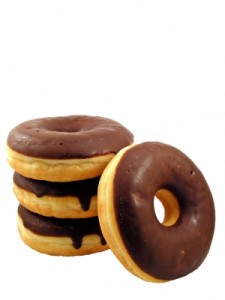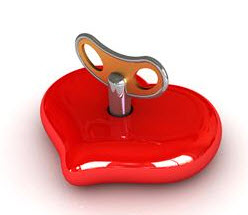 An estimated 102.2 million Americans have cholesterol levels above 200, which is considered borderline high, according to the American Heart Association. About one-third of those have cholesterol levels over 240, which is considered by today’s test standard to be in the high-risk zone. And a new study just released showed 41% of Canadians have high cholesterol levels.
An estimated 102.2 million Americans have cholesterol levels above 200, which is considered borderline high, according to the American Heart Association. About one-third of those have cholesterol levels over 240, which is considered by today’s test standard to be in the high-risk zone. And a new study just released showed 41% of Canadians have high cholesterol levels.
We have been told that high cholesterol is bad, that it causes heart disease (the leading cause of death in the U.S.), that we should all be tested for it, and that high levels must be treated, usually with statin drugs. With those assumptions and statistics, the problem would seem epidemic.
But in this article, I’m going to shatter five myths about cholesterol and hopefully change the way you think about it forever.
Myth #1: Cholesterol is Bad for You
Cholesterol plays several key roles in a healthy functional body. It keeps cell membranes from falling apart and plays an integral part in cellular repair. Cholesterol is also a vital pre-cursor to many major hormones including testosterone, progesterone, estrogen, cortisol, dehydroepiandrosterone (DHEA) and is required for synthesis of vitamin D.
The body manufactures about 75% of the cholesterol it needs. The rest we must take in from foods. Without adequate dietary cholesterol, the body may divert cholesterol to where it is needed most: cellular repair and healthy function in key areas, especially the brain. When this happens, there may not be enough left for use in hormone synthesis, which can cause hormonal imbalance.
This is why some people (especially women going through perimenopause) who do not eat enough cholesterol may experience more severe hormonal reactions and symptoms.
In fact, the body has a built-in mechanism to increase its cholesterol production to override a severe shortage. In extreme cases, when cholesterol is not being consumed in appropriate levels, the liver will step in and actually overproduce cholesterol. If you were to be tested at that time, your cholesterol levels could be considered high, even though you would actually be cholesterol deficient.
But that’s not the case for most of us. So for those of us eating healthy diets with moderate amounts of fat, how concerned should we be about cholesterol in food?
Myth #2: High Cholesterol Comes from Eating Foods High in Cholesterol
Despite popular belief that it’s the cholesterol in your food that influences cholesterol in the bloodstream, according to the Harvard School of Public Health, it’s actually the mix of fats in your diet that’s important.
Saturated and trans fats (often called “bad” fats) increase the risk for certain diseases while monounsaturated and polyunsaturated (often called “good” fats), do the opposite—they are good for the body and heart, and cells need them to help manage what goes in and out of cell membranes.
Cells need fat and cholesterol to function, but fat and cholesterol can’t readily travel through the blood. So the body combines them with protein-covered particles called lipoproteins. Lipoproteins can carry a good amount of fat and travel easily through the blood. There are three types of these particles that are important: low-density lipoproteins (LDL), high-density lipoproteins (HDL) and triglycerides.
Low Density Lipoproteins (LDL)
LDL is responsible for taking the cholesterol from the liver to the body’s cells. Once the lipoprotein reaches the cell, the cell attaches to it and extracts the fat and cholesterol it needs.
High-Density Lipoproteins (HDL)
HDL then takes over and plays clean up, collecting cholesterol from the bloodstream, LDL and artery walls, and transporting it back to the liver to be recycled, an equally important role in healthy cholesterol function.
Triglycerides
Triglycerides are the body’s main method of transporting fat to cells. They make up most of the fats you eat and that your cells use. They are an important part of healthy body function, but in excess they can cause problems. If your triglycerides are high, you have a lot of fat in your bloodstream, which means you are either making too much or are unable to burn it.
Myth #3: There is Good Cholesterol and Bad Cholesterol
Despite needing LDL, it has been argued that when there is an excess of it, particles can be deposited in the walls of the arteries of the heart and elsewhere, limiting blood flow. The deposits, known as plaque, can break apart and cause a heart attack or stroke. Because of this, LDL has been called the “bad” cholesterol.
The truth is, there is no good and bad cholesterol. There is only one cholesterol: LDL and HDL are lipoprotein cholesterol carriers and they are both equally necessary for survival and wellness.
While LDL has been labeled bad because it can cause plaque development, we now know that there are many types of LDL. In fact, if we want to create labels for good and bad, we could argue there is good LDL and bad LDL. Research has shown that LDL particles come in different sizes and that the large LDL particles cause no problem. The small, dense LDL particles can be troublesome, as they are tiny enough to squeeze through the lining of the arteries.
If they oxidize, or turn rancid, they can cause inflammation, which can lead to many if not all of our chronic conditions. C-reactive protein tests measure general levels of inflammation and can be an early warning sign to take action. Inflammation can be reduced through dietary changes such as increased consumption of vitamin E and fish oil.
Myth #4: Cholesterol Causes Heart Disease
We have known for a while that there is a correlation between cholesterol and heart attacks, but is it causal?
Research now shows that damage to the lining of arteries (such as what can occur when small dense LDL squeeze through and oxidize) causes the coronary heart disease associated with heart attacks. The damage causes inflammation and it’s the inflammation that leads to the heart attacks.
How does this happen? Let’s look briefly at the inflammatory process.
When you cut yourself, the damaged tissue releases chemicals to start inflammation. Blood vessels constrict to slow down bleeding. Blood thickens so it can clot and cells multiply to repair damage and facilitate healing while the immune system calls on cells and chemicals to protect against viruses and bacteria from attacking the cut.
This is very similar to what occurs within the arteries. As damage occurs, chemicals are released to begin the inflammatory process. Arteries constrict, blood begins to clot, the immune system sends help, and nearby cells are told to multiply. As this process occurs over and over again in the artery lining, scars called plaque form. Over time, blood thickening and artery constriction combine to make a heart attack or high blood pressure more likely.
So remember the first step after trauma: Chemicals are released to begin inflammation and start the healing process. Enter cholesterol, whose primary function is cell repair. Cholesterol is sent to help repair the damaged tissue in the artery linings and elsewhere: it is actually helping your body heal to keep you alive.
Now if this process is occurring repeatedly, cholesterol is continually being manufactured or recycled in order to facilitate the healing process. When tested, your cholesterol levels will seem high.
Because your body needs cholesterol to heal, what effect will lower levels have on the body?
Instead of trying to deal with the symptom, the high cholesterol, we need to look at the cause: The inflammation that is being caused by excessive and/or repetitive damage, particularly from small dense LDL particle oxidation.
Pomegranate has also been shown to be highly effective as an LDL anti-oxidation agent. Subjects taking pomegranate supplements in a clinical study were able to reduce artery thickness by 35%, increase blood flow by 45% and improve markers related to LDL oxidation by up to 130%.
As you can see, the connection between cholesterol and heart attacks is correlated but not causal. High cholesterol may not be anything to worry about; it may in fact be an important component of your body’s healing mechanism. The real focus should be on reducing high LDL levels and preventing its oxidation.
If you decide that you must take action to lower your cholesterol, there are two ways to do so: Change your diet and/or take statins.
Myth #5: Statins are a Safe and Effective way to Lower Cholesterol
A January 2008 cover story in Business Week concluded that there isn’t much evidence to support taking statins.
Upon review of statin data, a leading physician and professor at the University of British Columbia found there is no benefit in people over age 65 no matter how much their cholesterol declines and that there was no benefit to women at any age. Middle-aged men who took statins saw a small reduction in heart attacks, but no overall reduction in deaths or illnesses requiring hospitalization even though their “bad” LDL cholesterol went down.
The only time the drugs were seen as effective was with patients who had already had one heart attack, as it reduced the likelihood of having another. He concluded, “Most people are taking something with no chance of benefit and a risk of harm.”
But what about the marketing hype the pharmaceutical companies put out? Let’s read the small print on Lipitor’s claim that it reduces the risk of heart attack by 36% … in patients with multiple risk factors for heart disease. It says, “That means in a large clinical study, 3% of patients taking a sugar pill or placebo had a heart attack compared to 2% of patients taking Lipitor.”
In other words, out of every 100 people, three on placebos and two on Lipitor had heart attacks. That means that to spare one person a heart attack, 100 people had to take Lipitor for more than three years while the other 99 got no benefit. A useful statistic known as the NNT, or number needed to treat, means the number needed to treat in this case for one person to have any benefit is 100. Several recent studies have shown that the NNT for statins may be even higher: 250 or more for lower risk patients.
Dr. Jerome R. Hoffman, professor of clinical medicine at the University of California at Los Angeles, put it this way: “What if you put 250 people in a room and told them they would each pay $1,000 a year for a drug they would have to take every day, that many would get diarrhea and muscle pain, and that 249 would have no benefit? And that they could do just as well by exercising? How many would take that?”
It’s true that statins can lower cholesterol levels by (guess what?) reducing inflammation! Statins might be acceptable solutions if they were shown to be completely safe, but they are not. Statins have common side effects including muscle pain, cognitive impairments and sexual dysfunction and have been shown to increase cancer risk in rodents.
The Business Week article posed this question: What would work better?
Prescription: Change Your Diet
The answer, not surprisingly, according to Dr. Jerome R. Hoffman, professor of clinical medicine at the University of California at Los Angeles, is not a pill but rather diet and lifestyle changes. Several studies have shown that lifestyle changes, such as switching to the Mediterranean diet and eating more fish, brought greater declines in heart attacks than statins.
If you still want to lower your cholesterol levels, in addition to fish and omega-3s, walnuts and soluble fiber like oatmeal have been shown to be effective cholesterol reducers and most of us need more fiber in our diets anyway. Niacin (or vitamin B3) also lowers cholesterol and triglycerides and it recently outperformed Merck’s drug Zetia in arterial plaque prevention (resulting in Merck canceling the study.)
Physical fitness also plays a role with exercise and lifestyle changes such as stress reduction, diet changes and weight reduction.
Keep in mind that your doctor had little, if any, nutrition training in medical school and may not be comfortable guiding you in this regard. In addition, some physician friends tell me they are reluctant to suggest dietary changes because they find that people don’t always stick to them. So you may have to take the initiative with your physician to get the right plan in place for you.
Studies prove that the anti-inflammatory aspects of the Mediterranean diet and fish or fish oil, combined with a healthy lifestyle and reduced stress, are the most effective prescription for wellness, in the arteries as well as in the rest of the body. Read more articles on cholesterol and heart health at www.nehealthadvisory.com
To your wellness and health: your true wealth!
Inger
Author: Inger Pols is the Editor of the New England Health Advisory and Author/Creator, Finally Make It Happen, the proven process to get what you want. Get a free special report on The Truth About Sugar: It’s Not All Equal. Learn more about Inger and receive her free bestselling ebook What Your Doctor Isn’t Telling You by clicking the active link or go to www.ingerpols.com/freegifts
Photo Source: Microsoft Clip Art

 As we have read in
As we have read in 
 Despite popular belief that it’s the cholesterol in your food that influences cholesterol in the bloodstream, that has not been proven to be the case. Your body makes 75% of the cholesterol it needs to survive for healthy brain and cell function. The other 25% it MUST take in from the food you eat.
Despite popular belief that it’s the cholesterol in your food that influences cholesterol in the bloodstream, that has not been proven to be the case. Your body makes 75% of the cholesterol it needs to survive for healthy brain and cell function. The other 25% it MUST take in from the food you eat. This is the second of five articles highlighting the five supplements I think every adult should take. The first was a
This is the second of five articles highlighting the five supplements I think every adult should take. The first was a 
 Follow me on Twitter
Follow me on Twitter 